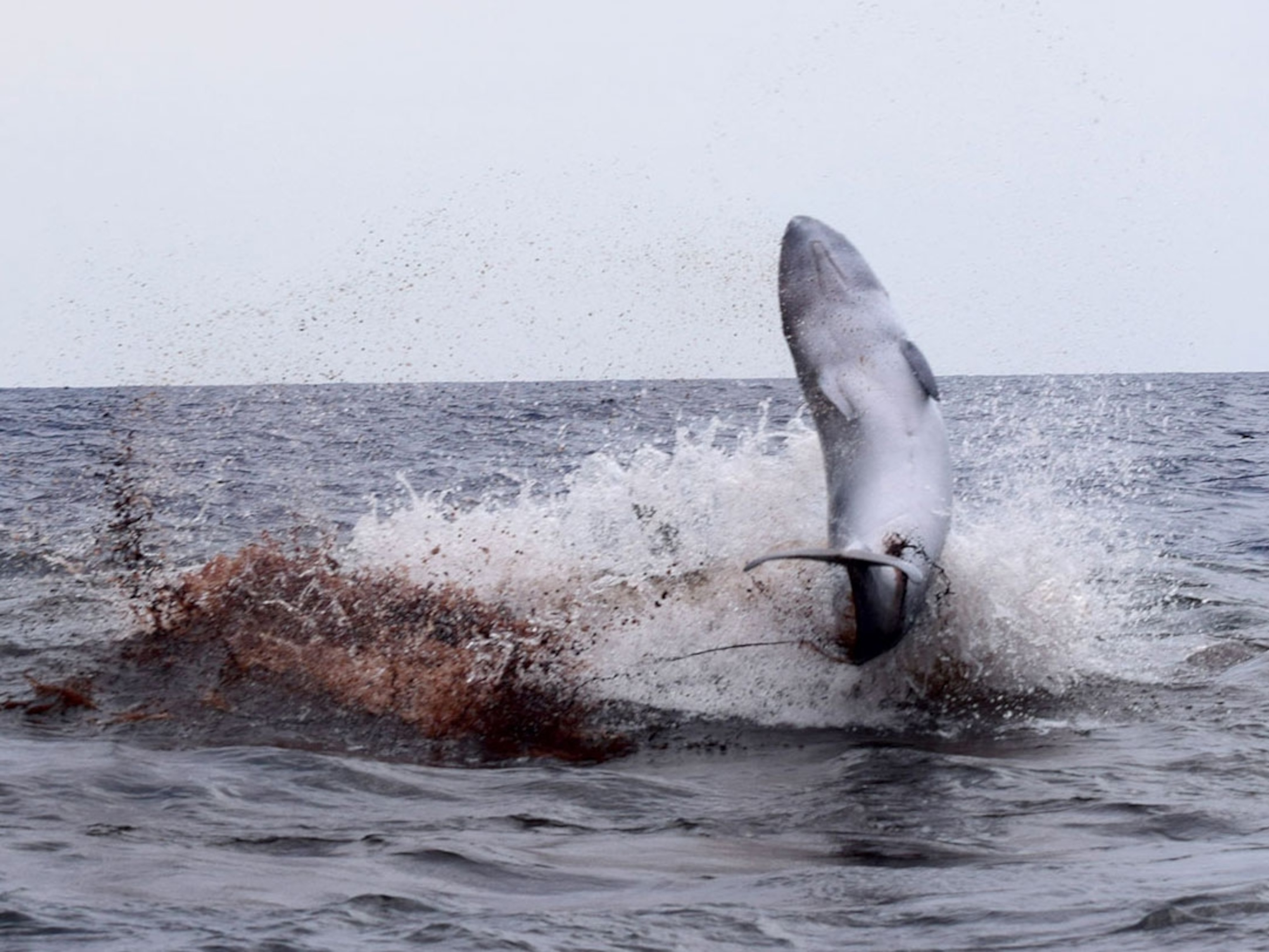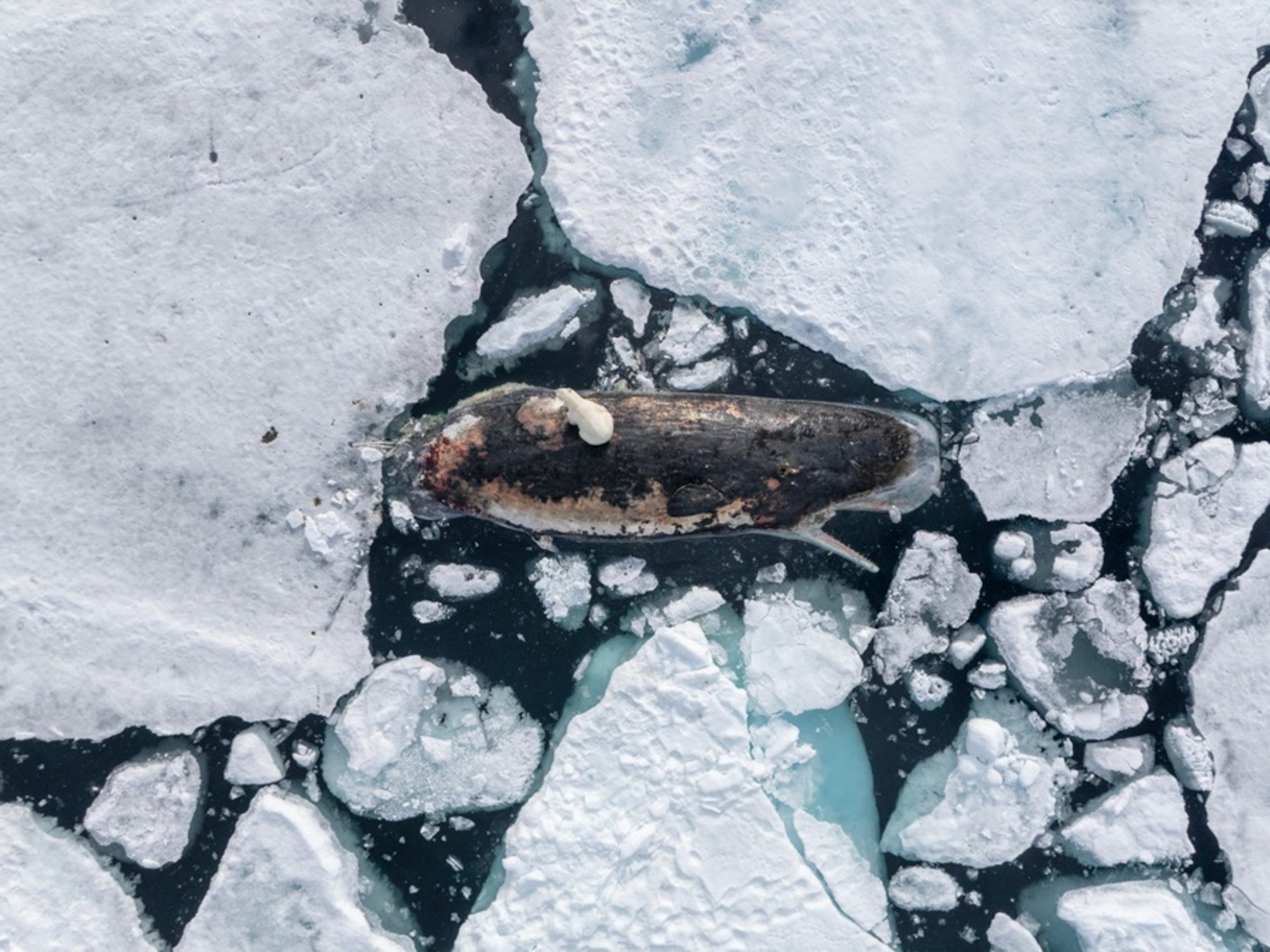
Why Skunks Have Stripes: To Point to Fierce Anal Glands?
Mammals' color patterns can communicate whether they spray or bite.
A skunk's stripes aren't just for style: They may direct predators' eyes straight to the source of the animal's smelly anal spray.
A new analysis of data on and pictures of nearly 200 carnivorous mammals—including skunks, badgers, and wolverines—shows that fierce fighters tend to be more boldly colored than more peaceable animals, which tend to use camouflage to stay safe.
And those colorations depend on the animals' methods of defense.
Creatures such as skunks, which have long stripes down their body, "tend to be really good at spraying their anal gland secretions—not just dribbling them out," said study leader Ted Stankowich, a biologist at the University of Massachusetts, Amherst. Skunks are known to eject their offensive musk as far as about ten feet (three meters).
Other "species that are pretty good at [spraying]—they may not have pure stripes, but their blotches sort of form a stripe down the body."
(See "U.S. Military Is Seeking Ultimate 'Stink Bomb.'")
On the other end, badgers—which bite attackers—often have stripes by their mouths.
"We think these stripes may guide predators' attention to the source of danger," said Stankowich.
"If you're a badger and your mouth is the source of danger, that's what you want to advertise."
Bold Colors an Alternative to Stinky Spray?
Warning coloration is more typically found in insects, reptiles, and amphibians, such as poison dart frogs.
(See pictures: "Rainbow Hues of Amphibian 'Worms' Demystified.")
This nonconfrontational technique for thwarting predators is especially useful for skunks, which prefer not having to spray.
Spraying is "costly ... they're depleting a weapon, using ammunition that might be useful, and it advertises where they are," Stankowich said.
The stripe "strategy" has been a successful one for skunks throughout evolutionary time, Stankowich said, as the same striped pattern has independently evolved multiple times in skunks and related species across the globe.
(See pictures of animal patterns.)
The zorilla, for example, can spray like a skunk but lives in Africa and is more closely related to weasels than skunks. Yet its fur is striped just like a skunk's, leading the researchers to conclude that the stripes are a good predator deterrent—as is, of course, the ability to spray.
Like skunks, most other mamallian predators use anal gland secretions, but generally in smaller doses, to mark territory, Stankowich noted. (Humans and primates lack anal glands.)
Skunks and other sprayers, though—finding themselves with a surplus of musk—"may have co-opted it for use as a defense."
The mammal warning colors study was published online May 25 by the journal Evolution.





